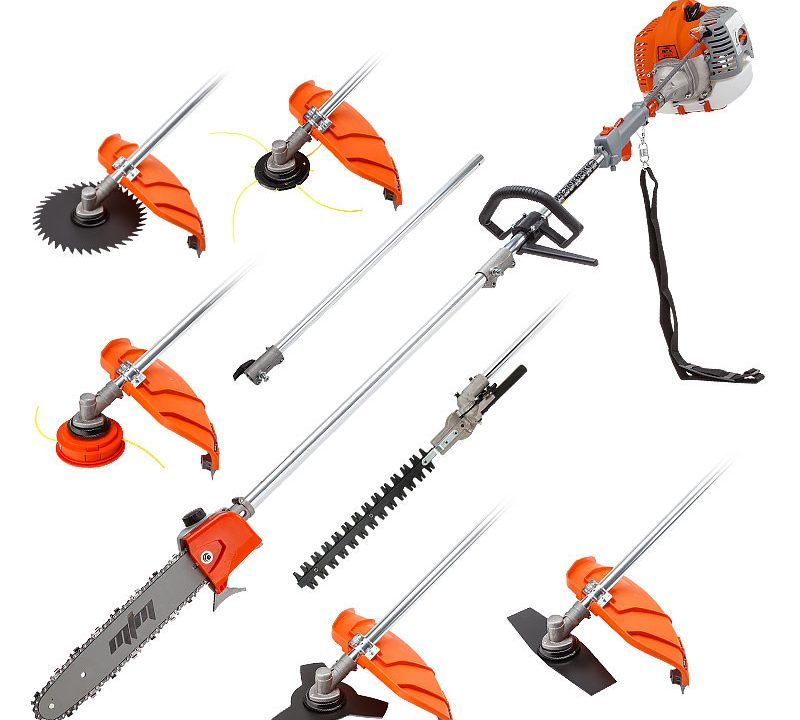Pole Saws and Multi Tools: Safe Use and Smart Choices for Every Aussie
Ever looked at a row of overgrown trees or tangled scrub and wondered how you’ll ever get on top of it—let alone keep your place safe from fires? Or maybe you’re part of a crew prepping for bushfire season, wondering what gear actually helps on a long day out. Whether you’re a homeowner, a renter, or someone who spends their weekends on the fireground, pole saws and multi tools can be a real game changer.
In this guide, you’ll find practical advice for choosing and using pole saws and garden multi tools—at home, on the job, or out with the team. We’ll cover safe prep, real-world mistakes, smart habits, fireground tips, and plenty of support for every kind of Aussie household. No jargon, no sales pitch—just clear, lived-in advice to help you get it done and stay safe.
(Looking for reliable gear? Check out this
Baumr-au Pole Saws and Multi Tools range—a trusted choice for homes, tradies, and volunteer crews.)
How to Prepare: Setting Yourself Up for Success
Choosing the Right Tool for Your Needs
The first step is working out what you actually need. Is it mainly light pruning, heavy limb work, or clearing hard-to-reach branches before fire season? A simple pole pruner might do the job for the odd branch, but for tackling thick limbs or maintaining larger properties, a multi tool kit (with chainsaw, hedge trimmer, and more) can save time and money.
For crews or bush blocks, look for robust petrol-powered models. For renters, smaller yards, or quick jobs, battery pole saws or compact electric units are lighter and easier to store.
Try to test the weight and balance before buying—a saw that feels light in the shop can get heavy fast overhead.
Safety Gear: Don’t Cut Corners
Even quick jobs can go wrong. Always use a helmet, eye and ear protection, gloves, long sleeves, and steel-capped boots. For chainsaw attachments, cut-proof chaps are a lifesaver. Keep pets and kids well away, and double check your footing—especially on slopes or wet grass.
“We had a callout where someone trimmed a high branch and forgot the helmet—branch snapped back, left them dazed for hours. No matter how small the job, gear up first.”
Prep and Maintenance: Before You Start
Read the manual, even if you think you know the tool! Check all parts are tight, the chain’s sharp and lubricated, and nothing’s cracked or loose. For petrol models, use the right fuel mix and inspect for leaks.
Mark out a safe zone—no one should stand directly under where you’re cutting. If using a multi tool, swap out attachments only with the engine off and cool.
Using Pole Saws and Multi Tools: Real-World Advice for Every Situation
At Home: Stay Safe and Tidy
Start slow. Let the tool reach speed before cutting. Make small, controlled cuts—never force it. Always cut below shoulder height, and keep your body well balanced.
Keep an eye on falling branches and don’t work alone if possible. Let someone know you’re working outside—especially if you’re older, on medication, or live remote.
On the Fireground: Teamwork and Safety
Crews use pole saws for rapid removal of dangerous limbs, clearing tracks, and maintaining firebreaks. Always use a spotter—never assume others can see where you’re cutting.
Assign a “safe zone” and rotate operators to avoid fatigue. Mark out trip hazards and radio through before dropping big limbs. Always refuel away from active work zones.
Real Mistakes—and How to Avoid Them
- Forgetting to clear undergrowth—tripping or twisting an ankle on hidden debris
- Overreaching above shoulder height—can cause serious back or neck strain
- Not checking for hidden wires or animal nests before cutting
- Trying to cut alone—no one to call for help in case of an accident
Fire Season Prep: Using Your Tools to Make a Difference
Why Clearing Matters—And How to Do It Right
Overhanging limbs, dense shrubs, and scrub build up can make a fire much worse. Pole saws let you clear high branches, create safe zones, and reduce the chance of embers catching near the house. Multi tools make it quicker to trim hedges, whippersnip grass, and reach tricky spots.
Remember, not every tree needs to be cut back to the trunk. Target what’s overhanging the roof, blocks exits, or touches powerlines (but leave powerlines to the pros). Keep paths, driveways, and escape routes clear for your family—or for crews who might need access in a hurry.
“Every year, we see homes saved just because the grass was kept low and branches cleared overhead. It’s not about making the yard bare—just less risky.”
Packing and Storing Your Tools Safely
After use, clean saw blades, empty fuel, and store everything off the ground and out of the weather. If you’re in a bushfire-prone area, keep tools easily accessible—don’t bury them behind a wall of gear.
For fire crews, create a simple log for tool checks and maintenance after every deployment. A well-cared for saw lasts longer and won’t let you down when it’s needed most.
Who Needs What: Tips for Renters, Families, Elders, and Crews
Renters and Units: Focus on Portable, Easy Tools
If you rent, talk to your landlord about what you can (and can’t) clear. Stick to battery pole pruners and small hedge trimmers—they’re lighter and easier to store in a unit or small garage.
Always return outdoor areas to how you found them and check your rental agreement before trimming anything near shared boundaries.
Families and Pet Owners: Keep Everyone Safe
Lock tools away from kids and pets. Set clear boundaries when you’re working—one person operates, others help from a safe distance. If your pets panic at loud noises, keep them inside during tool use.
Practise emergency stops with older kids if they help in the yard. The sooner they learn what’s dangerous, the better.
Older Aussies and Those With Disabilities
Choose lightweight tools with ergonomic handles. Never work alone—ask a neighbour or family member to check in if you’re doing anything strenuous. For ongoing yard care, consider a local mowing service for bigger jobs, and focus on small, safe tasks.
If you’re unsure, reach out to your local council for help with green waste pickup or hazard reduction.
Volunteer Crews and Firefighters
Rotate roles to prevent fatigue—operating a pole saw is hard yakka. Keep a whiteboard or digital log for tool status and repairs. Debrief after major jobs and share what worked (and what didn’t) for future training.
Respect everyone’s comfort level—new members might need extra support or “buddy” up for their first jobs. Safety culture comes from the ground up.
Little-Known Tips, Lessons Learned, and Mistakes to Avoid
Most accidents happen when people rush, skip checks, or work tired. Take five minutes before starting—review your plan, clear your work area, and check your gear.
- Always keep your chain sharp and tensioned—dull blades slip and cause injuries
- Never cut in wet, windy, or stormy conditions—risk of falling limbs or electric shock
- If you drop a tool, check it over—cracks or bends are easy to miss
- Store attachments in labeled tubs or hangers—so you’re never scrambling in an emergency
“After the Black Saturday fires, some properties survived just because the exits were clear and tools were ready to go. It’s the boring prep jobs that make all the difference.”
More Practical Fire Safety and Preparedness Guides
- How to Prepare for a Bushfire: Step-by-Step Guide
- Affordable Home Upgrades for Bushfire Protection
- Bushfire Evacuation Checklist for Every Family
- What to Pack in Your Emergency Kit
FAQs: Your Pole Saw and Multi Tool Questions, Answered
Do I need a pole saw if I only have a small yard?
You might not need a full-size pole saw, but a small electric or battery model can make life much easier for even the odd job. You’ll be safer, and you won’t need to climb a ladder to trim a branch.
Are multi tools worth the extra cost?
For most people—yes. You get several attachments (chainsaw, hedge trimmer, brushcutter) in one unit. Less storage space, one fuel type, and fewer repairs over time. Great for prepping before fire season.
How do I stay safe while using a pole saw?
Wear full PPE—helmet, gloves, eye/ear protection, boots. Never work under a branch you’re cutting, and don’t rush. Always have someone nearby if you’re not confident or working high up.
Can volunteers and fire crews use household pole saws?
Sometimes, but only if they’re robust and meet your local service’s safety checks. For frontline use, stick to tested gear and keep a log of maintenance. Don’t bring underpowered tools to a big job.
What’s the best way to maintain these tools?
Clean and oil blades after use, empty fuel before storage, and check chains or moving parts for wear. Replace worn parts early—breakdowns always seem to happen at the worst time.
Take five minutes this week to check your gear, talk over your plan, or help a neighbour get ready. The smallest prep makes a big difference—especially when fire season comes round again.
This article was created using practical emergency preparedness and firefighting advice and reviewed for clarity. It is intended as general public information for Australian households, communities, and emergency service teams.



